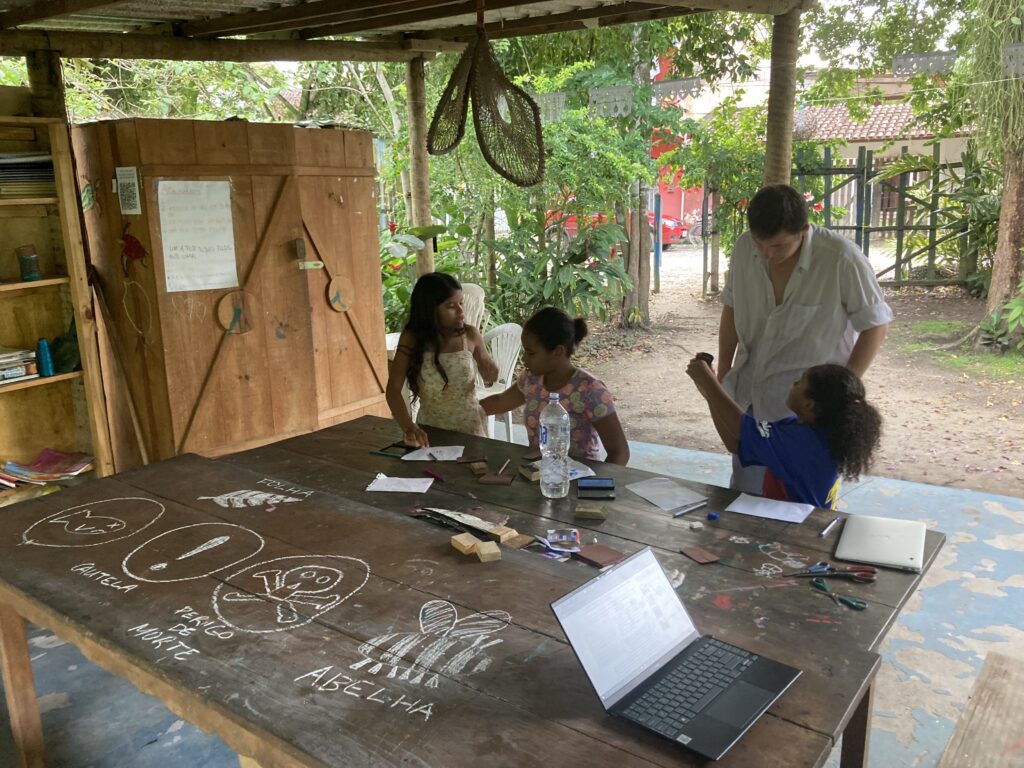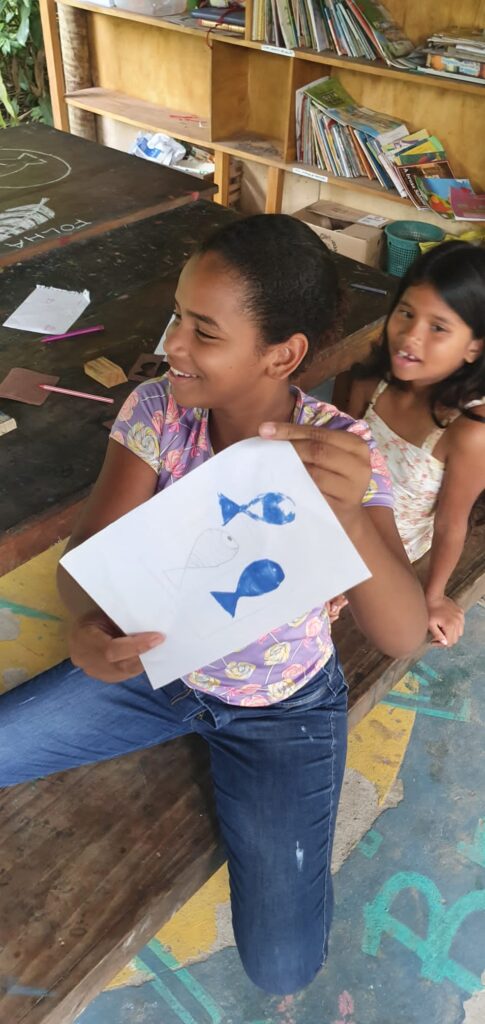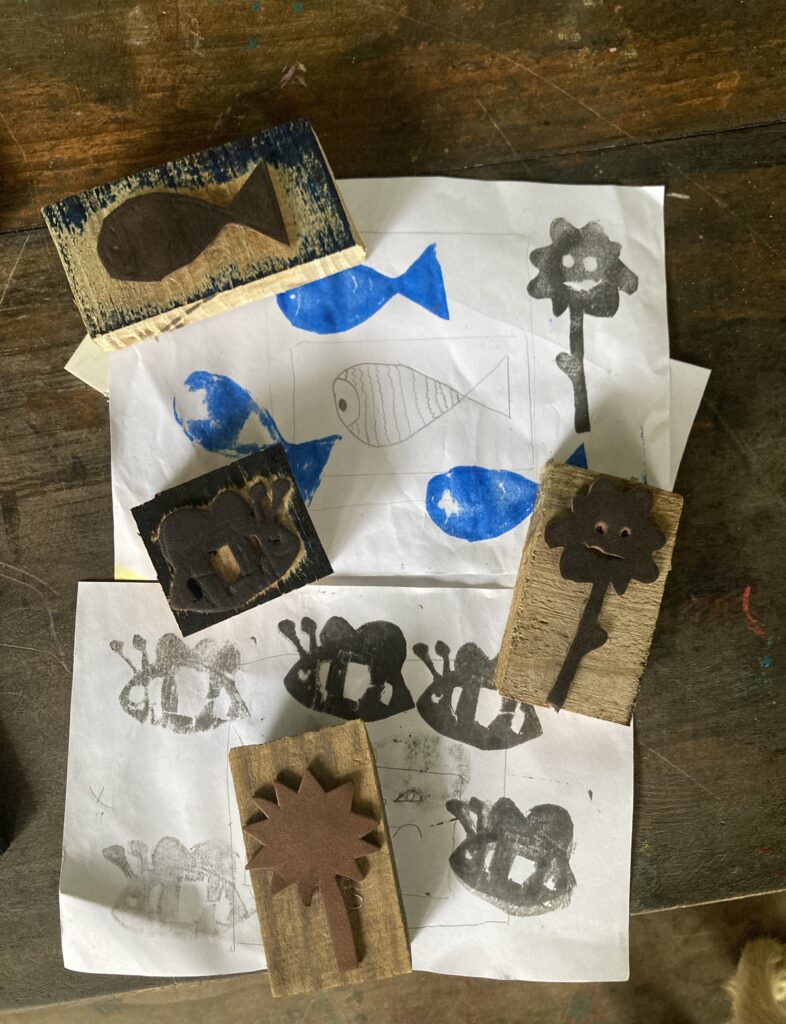Activity time: What represents nature to you?
Whilst we at ETIV always like formal lessons with lots of directed learning for our students, we know its also important to give the kids a chance to express themselves back to us. That’s why we regularly hold classes based mainly around creative activities which give the children a chance to show us what they have learnt in a laid-back, fun atmosphere. This week that meant an arts and craft class where we asked the students to create stamps out of recycled materials representing nature and conservation as they understand it. This kind of class is also a chance for us teachers to learn how the kids respond to the material we discuss in class, and what stands out to them as most important.

We start by going over the themes we discussed last week, which should inform the ideas they choose for their designs. This week that was the importance of biodiversity and the threats posed by pesticides in intensive agriculture. It was interesting that, given the choice between designing stamps of plants and animals, or stamps of warning signs for pesticides, the children all chose to depict nature at its strongest and most beautiful. For the teachers, it is always refreshing to see an optimistic younger generation who value positive messages about nature over doom and gloom about the threats it faces.
After sketching their designs and cutting out the foam for their stamp, each student comes to one of the teachers to safely stick the stamp to a piece of wood with the glue-gun. As we get towards finishing the stamps, several of the students say they don’t expect their design to work… But this soon changes when they see their stamps in action!
Now, with the stamps finished, we ask each student to explain their choices. Jennifer tells me she has chosen to make a stamp of a fish because her star sign is Pisces, and she wants to see more done to protect marine environments so that fish stocks are preserved. I ask her what kind of dangers face fish, and she remembers how we discussed pesticide run-off in last week’s class.



Maria has chosen to depict a sunflower for her stamp, and she tells me that it is the flower that she thinks best represents nature’s beauty. She says we need to be careful about pesticide use to avoid damaging wild flower populations. The sunflower is the “smiling face of nature” looking up at a blue sky and a bright future.
by Oskar James Maitland
-
Interning with ETIV’s new IT Program
My experience combining my interest in data science and cultural immersion as an intern at ETIV.
-
Environmental Education at ETIV
How ETIV environmental education program is helping students connect with nature and learn how to protect their environment.
-
A Rainy Day in Itacaré
An ETIV volunteer’s routine and reflections on a rainy day in Itacaré
-
My Volunteer Routine
My daily routine as a volunteer at ETIV
-
Beach Camping around Itacaré
Beach Camping around Itacaré There’s nothing quite like sleeping under%rarebiz-readmore%
-
The Lost Cachoeira: Part 1
The Lost Cachoeira: Part 1 A little throwback to 2019,%rarebiz-readmore%
